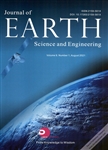Internal Pressure Sculpting and Speleogenesis in Autogenic Karst
Internal Pressure Sculpting and Speleogenesis in Autogenic Karst作者机构:Karst Research Group University of South Florida Tampa 33612 Florida USA
出 版 物:《Journal of Earth Science and Engineering》 (地球科学与工程(英文版))
年 卷 期:2013年第3卷第7期
页 面:461-476页
学科分类:082703[工学-核技术及应用] 08[工学] 09[农学] 0903[农学-农业资源与环境] 0827[工学-核科学与技术]
主 题:Cave development in limestone mixing corrosion karst computer modeling solutional widening rate speleogenesis.
摘 要:Understanding the ongoing speleogenic processes that produce sinkholes and control the vital drinking water supplies of Florida and much else of the world is necessary research. This article (and the associated poster presentation) discusses theoretical processes that may act in addition to mass dissolution kinetics in producing voids, conduits and caves in autogenic karst landforms. Possible theoretical factors that affect these speleogenic processes are: microscopic mixing corrosion (low constant flow, low constant flow against current, temperature-induced mixing corrosion, and pressure-induced mixing corrosion in karst matrix), random dissolution models, simulation of gravity-induced microscopic breakdown, and storm surge effects. Finally, a theoretical model is discussed that unifies these various microscopic processes into a macro-scale process, called internal pressure sculpting. Computer models were designed to illustrate these theoretical processes: Non-calibrated computer models simulating each process discussed in this paper are presented for illustration, as well as the preliminary results of calibrated models depicting random dissolution, mechanical breakdown, and storm surge effects. The theoretical processes discussed and simulated may have major effects on cave morphology. Computer simulations appear to accurately portray the shape and form of some cave features with dissolutional morphologies. Theoretical discussion concludes with a general discussion of possible improvements to the presented models as well as the ability to generalize theoretical processes to hypogenic, halogenic, and autogenic speleogenesis.



